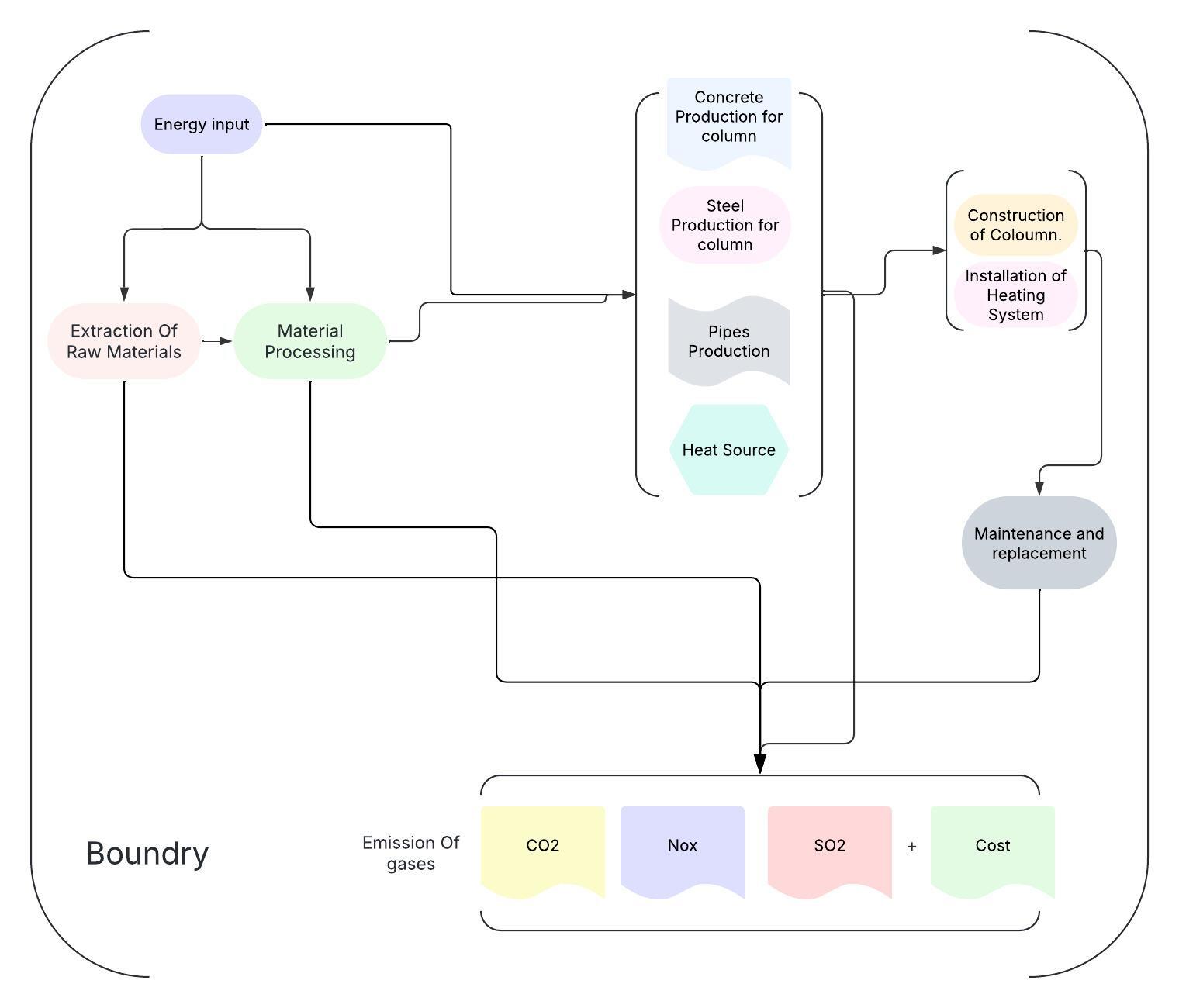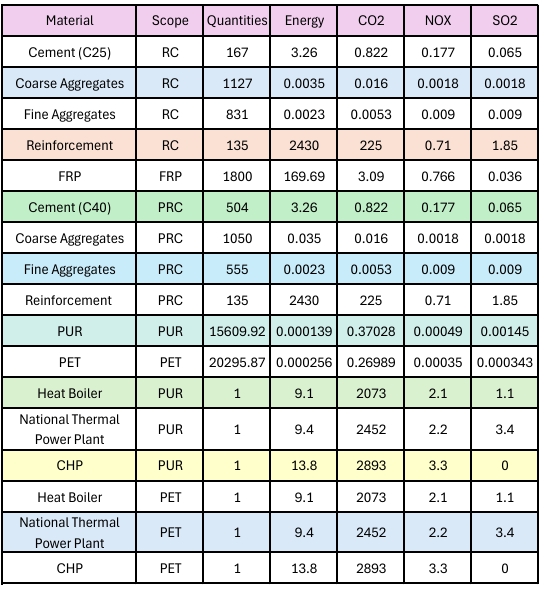Introduction:
As the modern construction industry evolves, the need of sustainable buildings and materials becomes increasingly crucial. Life Cycle Assessment (LCA) helps us understand the environmental impact of complex systems by looking at their entire life cycle—from raw material extraction to production, operation, and disposal. As industries grow more interconnected, it’s important to assess how different subsystems contribute to emissions and resource use. LCA provides a structured way to identify major sources of pollution and find ways to reduce environmental harm.
Scope and Goal of our Integrated System :
This study focuses column of residential building and pipes of disctrict heating system with heat sources. It examines the materials used, energy consumption, and emissions such as CO₂, SO₂, and NOx. While dismantelling of subsytems at the end of line is not included, the goal is to lower their overall environmental impact. By analyzing subsystems with lower pollution levels and compiling a Life Cycle Inventory (LCI), this research help us to guide for more sustainable choices.
Life Cycle Inventory :
LCI data for the materials used in the column design (Marceau,2007). The units of energy consumption and emission of gasses are(MJ/t), CO2, NOx, SO2 (kg/m3). The quantities of materials consumed to produce a cubic meter of concrete.
FRP: Density of fibre Reinforced polymer is 1600kg/m3 (FRP properties), so for 1m3 1600kg of FRP is needed.
Table 1.
Key Note : For making our research a little bit less cumbersome we only considered 3 interveentions in District Heating system. We only considered Leak Inspection (LI), Piper replacement(PR) and Burner Cleaning (BC).
Interventions : Created a weighted sum of the maintenance events.
- For Building column : interventions <- s2$DC + s2$MR + 0.25 * s2$MJR + 0.35 * (if (!is.null(s2$RF)) {s2$RF} else {0})
- For pipes : interventions.pipe <- s2$DC + s2$LI + 0.25*s2$PR + 0.35*(if (!is.null(s2$BC)) {s2$BC} else {0})
- For heat source : interventions.source <- s2$DC + s2$LI + 0.25*s2$PR + 0.35*(if (!is.null(s2$BC)) {s2$BC} else {0})
The new integrated system maintenance planning that we had done will now be considered in LCA along with our subsystems. Well it created a more realistic approach to find the systems overall impact. The emissions of each column and pipes with heat sources are calculated and aggregatred into a table to check the system’s overall energy consumptions.
![]()
It is evident that systems Co2 emmisions is the highest among all other emmisions and energy consumption bceause of pipes and heat boilers. Heat boilers produces large amount of CO2, which also impacting our intgrated system.
x
x
x
x
x
| Main Page | Introduction | Individual Systems | Integration Context | Integrated Maintenance Strategies | Life Cycle Analysis | Multi-Objective Optimization |


